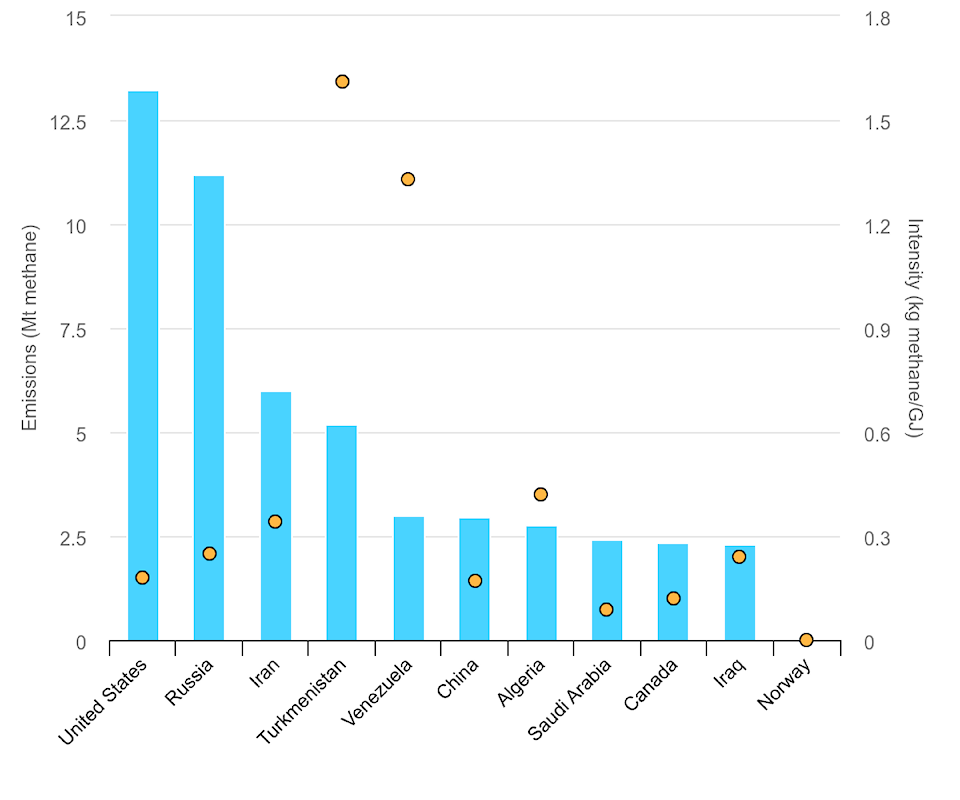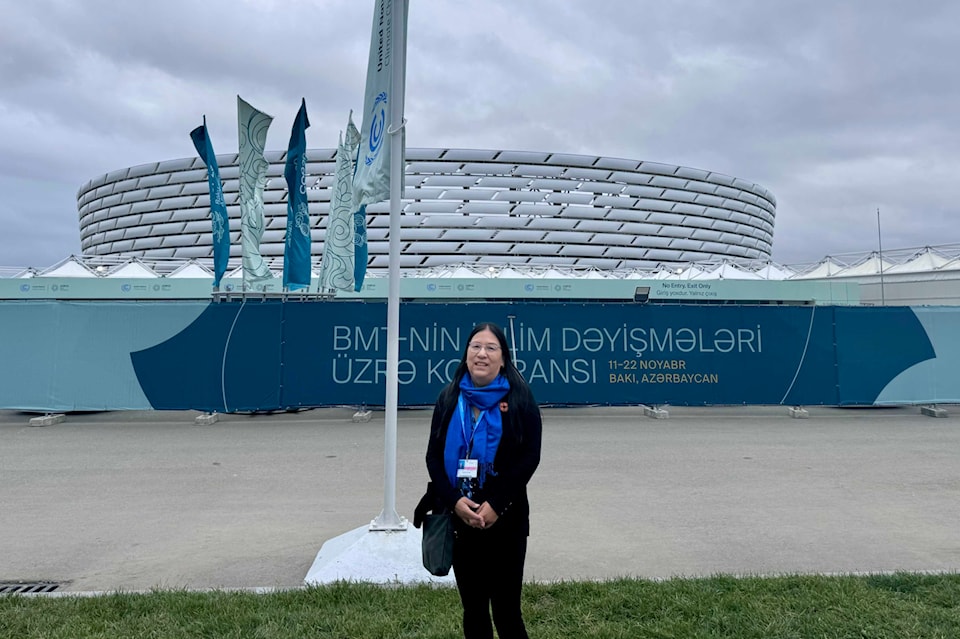The First Nations Climate Initiative (FNCI) believes it has found connections through the recent COP29 climate conference that further its goal of economic development while reducing harmful emissions from the use of liquefied natural gas.
The FNCI comprises four northern B.C. First Nations, the Haisla, Nisga'a, Metlakatla and Halfway River. Two of them, the Haisla and Nisga'a, have interests in exporting LNG from northeast B.C. to Asia through proposed liquefaction plants in northwest B.C.The Haisla are the proponents of the proposed Cedar LNG liquefaction plant and the Nisga'a are partners in the Ksi Lisms LNG project and Prince Rupert Gas Transmission pipeline project.
At this year's United Nations climate conference in Baku, Azerbaijan, the initiative hosted a side event titled, "Decarbonization in Asia: Contributions from Canadian Indigenous Communities & Their Partners, 'Lessons from the Grease Trail'," through which they met partners such as Ekona Power, a methane pyrolysis company.
Methane pyrolysis
"It's really important that people understand what we're trying to do. We're investing in our economy, partnering with methane pyrolysis companies to utilize western Canadian LNG in a decarbonized way," said Alex Grzybowski, FNCI facilitator and CEO of K’uul Power+, who was part of the delegation.
In methane pyrolysis, the methane molecule within natural gas is broken down into solid carbon and hydrogen by heating it. The solid carbon can be used for other purposes, such as graphite for batteries, asphalt for roads and more. The hydrogen can be turned into ammonia by combining it with nitrogen, the most common gas in the atmosphere.
Producing ammonia is important because when it is mixed with coal and burned, "the carbon footprint of the process goes down as ammonia doesn't produce GHG," Grzybowski explained.
In 2023, Robert Johnston, independent research advisor to FNCI and research director of the Center on Global Energy Policy, that identified ways in which Canadian resources could contribute to decarbonization in Asia. Johnston was also part of the delegation.
"We had new partners emerge from our trip to COP," he shared. "One of them is a methane pyrolysis company that's already actively doing work in Korea and Japan, which are two of our target countries in Asia."
Vancouver-based Ekona Power is developing a methane pyrolysis reactor at its test facility in Burnaby. Operational testing is set for 2025 and it is expected to be commercially ready by 2026. One of Ekona's investors is Mitsui & Co., a Japanese global investment and trading company.
It is one of four methane pyrolysis pilot projects in B.C., two of which are working with FNCI Nations — Innova Cleantech in Prince Rupert and New Wave Hydrogen in �������� Lake. There will be more details released regarding these projects in the near future, but FNCI is calling for Asian and Canadian private and public sector organizations to partner with them on these projects.
FNCI is also calling for the B.C., Alberta and federal governments "to adopt policies and enter international partnerships that ensure that Canadian low-carbon resources and emerging decarbonized fuels contribute directly to GHG reductions and decarbonization in the countries that are our trading partners."
Improving methane regulations in the oil and gas industry
FNCI wants to use western Canadian LNG to help decarbonize Asian economies, but can LNG's methane emissions be curbed? Put shortly, yes. Whether or not the necessary regulations will be implemented in the provinces is another question.
"We also met with gas producers. They want to be part of the solution," said Grzybowski.
"Depending on the custodianship of LNG's lifecycle — including where it's produced, its transportation, cooling, rewarming and how it is used — its emissions can be either very low, relatively speaking, or it can be high," he said. "Methane emissions are a really serious issue that has to be managed."
According to the (IEA), methane is responsible for about 30 per cent of the rise in global temperatures since the Industrial Revolution began. It has a shorter lifespan than other greenhouse gasses such as carbon dioxide — seven to 12 years compared to CO2's hundreds of years — but it traps 84 times more heat per molecule.
"We put a lot of effort in Canada into managing methane emissions. We've made progress on substantially reducing what is called 'fugitive methane'," Grzybowski said.
Fugitive methane is a term for gas that has leaked due to subpar infrastructure and poor management.
Canada was the ninth-highest emitter of methane coming from the oil and gas industry in 2023. However, it is trending in the right direction as methane emissions have steadily gone down since 2005 by a rate of 7.1 per cent.

A found that globally, the oil and gas industry is leaking 30 per cent more methane than governments were reporting and in Canada, that amount is even higher. Methane leaks were approximately 50 per cent higher in Canada than reported. This study analyzed 22 months of satellite observations between May 2018 and February 2020.
Canada has been working on its methane abatement regulations since 2018. The proposed were finalized in 2018 under the Canadian Environmental Protection Act, 1999. These were designed to reduce Canada's methane emissions by 40 to 45 per cent below 2012 levels by 2025 from the oil and gas sector.
Equivalency agreements are in place under 2024 for Saskatchewan and 2025 for Alberta and British Columbia. Under these agreements, the Government of Canada allows the provinces to manage emissions from the oil and gas sector in a manner that is equivalent to the federal regulations. The purpose of these kinds of agreements is to minimize the overlap of regulations as these provinces already have policies in place.
Since then, the proposed federal regulations have been amended to reduce emissions by at least 75 per cent below 2012 levels by 2030. These include improved emission standards and work practices to inspect sites monthly and make repairs.
The IEA found that if countries improved regulations in the oil and gas industry, fugitive methane leaks would be. Regulations such as banning non-emergency flaring, imposing mandatory leak detection and repair programs and introducing equipment standards would drastically curb methane emissions.
While Canada has improved in managing fugitive methane, the IEA found there is still room to strengthen the country's regulations. The Pembina Institute, David Suzuki Foundation, Environmental Defense Fund and Clean Air Task Force submitted a to the B.C. Energy Regulator in 2023. Among their suggestions was that equipment should be inspected monthly.
Under the proposed federal regulations, monthly inspections of all facilities are required. B.C. too will require monthly inspections beginning on Jan. 1, 2025. , however, inspections are only required at least twice a year beginning on Jan. 1, 2025. That number rises to at least three times a year on Jan. 1. 2027. Alberta has yet to disclose details on its inspection policy.
suggests if provinces achieve full equivalency with federal regulations, it would result in an increase of three per cent in annual industry expenditures.
A decarbonized future
"Our decarbonized future doesn't mean we don't have toxic substances to manage. But if we don't manage them well, we end up with significant environmental impacts," said Grzybowski.
"One of the major barriers in developing and implementing meaningful climate action is the lack of constructive collaboration," he continued. "That means that people that don't necessarily agree with each other are able to engage and as a result of that engagement, maybe everybody learns something and comes up with better ideas. If we're hamstrung or undermined by polarization, nobody wins."
Grzybowski views the FNCI as a hub for constructive collaboration.
"Since we started the initiative, the door has been open to involve people. Anyone is welcome, as long as you're prepared to have a real conversation. You have a different idea, you think there are mistakes in the way we think, bring it on."



